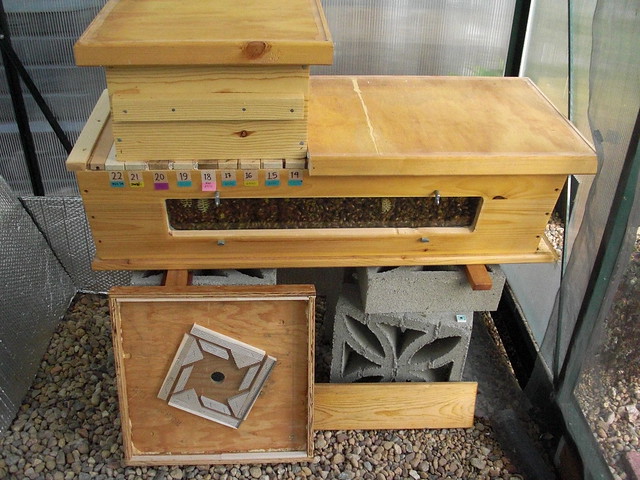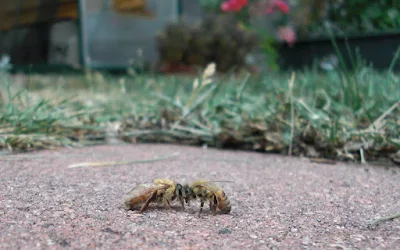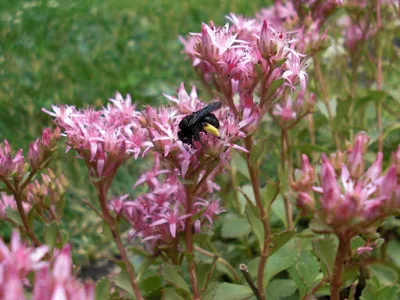 |
| If only chamfered top bars worked as well as the Vortex Bee Escape. Within hours, all was quiet inside the super. |
Welcome to our backyard and our venture into beekeeping with Top Bar Hives in Colorado. Currently blogging from Coastal Virginia, we hope this site is helpful to you in your very own TBH adventure. — HB
July 30, 2010
The Great Escape
July 25, 2010
Letting Go
Our second effort at drone culling didn't go so well; there weren't any drone cells on the combs we selected and both of us ended up getting stung. So we're letting go of the idea that we can use this method to manage varroa for the bees. For now, we're embracing the philosophy that if the colony is unable to deal with the mites on their own, then they have genetics that should be let go. Time will tell, but we feel confident in our colony. They've been displaying hygienic behavior, such as pupae with mites being rejected, and mites being thrown outside the hive, so it seems they've got good genetics. If they overwinter and swarm next year, we won't try to catch them. For the greater good of the world around us, we'll simply let them go.
July 20, 2010
Long-Horned Bee on 'Dragon's Blood' Sedum
July 08, 2010
Super Wonky
Our hive is definitely full. These are the combs from the very back of the box. Unfortunately, the girls joined them together and attached them to the false back to boot. Not realizing this, I made a mess trying to pull out just one. But they were really nice about it and let us take both combs without incident. We'll cut off the wonky parts, and give them back the straight parts.
We'll store them in the freezer until sometime in August, when we start prepping for Winter. Yes, Winter. It was 97°F on Saturday, but we beekeepers are always concerned about having enough stores to survive the next Winter. There's probably 15 lbs of honey still in the hive, but we want them to have at least 30lbs by Labor Day.
So what of the super? BB lifted it up, and here's what's up...
July 06, 2010
Orange-belted Bumblebee and Lamb's Ear
July 03, 2010
July 02, 2010
Jelly-Belly Bee Excavating Nest
Also known as mason or leafcutter bees, jelly-bellies carry pollen on
their scopa, the fuzzy yellow area on this bee. They are solitary bees
and don't live in colonies. Instead, one female leafcutter bee will dig
out a nest, create nest cells and provide her young with food. Adult
females may live up to two months and lay 35-40 eggs during this time.
(Our honeybee queen is laying up to 3,000 eggs a day.)
At least one species of leafcutter bee is cultivated for agricultural use in Colorado. Megachile rotundata
is used to pollinate alfalfa, a function that it does far more
efficiently than honeybees. The leafcutters are provided with predrilled
"bee boards" to use for nest construction. At the end of the season,
the nest cells with developing bees are collected and carefully stored,
to be released the subsequent season when alfalfa blooms (June).
 |
Leafcutter bees are important native insects of the western United States. |







